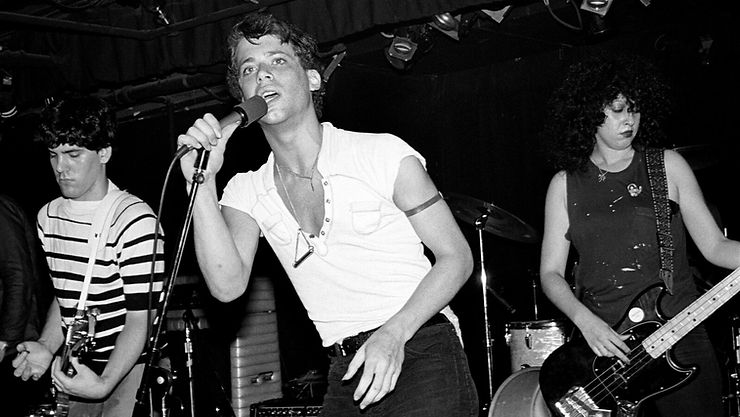By: Audrey Wang
For a short period of time in the 1970s, highschoolers ruled the night with music and freedom. Although their bands were short lived, it brought a whole new life to some – and inspired others. During the daylight, they were students at Stuyvesant High School. At night, they created their own rock scene, living a different world of exhilarating freedom.
Almost all under 18, the next four years were spent building their musical empires of pop and punk. Then they would perform at places like CBGB, Max’s Kansas City, Hurrah and TR3. These shows weren’t for all-ages, unlike today. The teen bands performed for others like them – fans of punk rock and hardcore music. This inspired many teens and created many bands. This short time in New York’s musical history had a big impact on many artists and audience members.
Some sacrificed precious time. Eric Hoffert, who maintained a balance consisting of four hours of homework each weekday, followed by four hours of guitar practice. His weekends were reserved for his band, the Speedies. There was Arthur Brennan, who would regularly hitchhike 20 miles to the only newsstand for the latest news that covered music. Brennan eventually renamed himself as Darvon Staggard and ran away to New York to join a band. Then there was Kate Schellenbach, a ninth grader who hear a rumor about kids her age playing in the most famous music clubs, just a couple of blocks from her house.
After school started, Kate recalls her high school life. “I remember going into the girls’ bathroom,” she started. “And this girl, Nancy Hall, who was the coolest, was sitting on the sink.” Nancy suggested Schellenbach to go see a band called “Student Teachers” play at CBGB later that week. “If I hadn’t seen the Student Teachers that fateful night, I might never have been a drummer,” Schellenbach continued. “Seeing Laura Davis play drums, seeing Lori Reese play Bass and how exciting the whole scene was, everything about it made me think, ‘Oh, maybe this is something I can do,’ these people were still in high school – it seemed attainable.”
Schellenbach went on to help found the Beastie Boys, and later, Luscious Jackson with Jill Cunniff and Gabby Glaser. “Night was freedom,” she said, “and it felt like we were really safe, if you were a parent, you might think the opposite – those kids are going out to nightclubs, they are only 13, that’s so dangerous. No. My daytime at I.S. 70 was really dangerous,” she continued, referring to her public middle school. “My nighttime was safe.”
In 1980, the teen punk age was slowly coming to an end, like a storybook closing its back cover. Some members went on to play in other punk movements, while others left their young spirits behind, taking on new jobs. Gregory Crewdson, from the Speedies, went on to be a tableau photographer. Hoffert, Crewdson’s bandmate, became a successful data technology pioneer, and Allen Hurkin-Torres, another of their bandmates, was a New York State Supreme Court justice.
Maybe for them, the age of punk rock has passed. But what they did in their youth will stay with them forever. Schellenbach described the period of time as “spawn[ing] so many cool things – art, authors, hip-hop. A magical time in New York City!”











